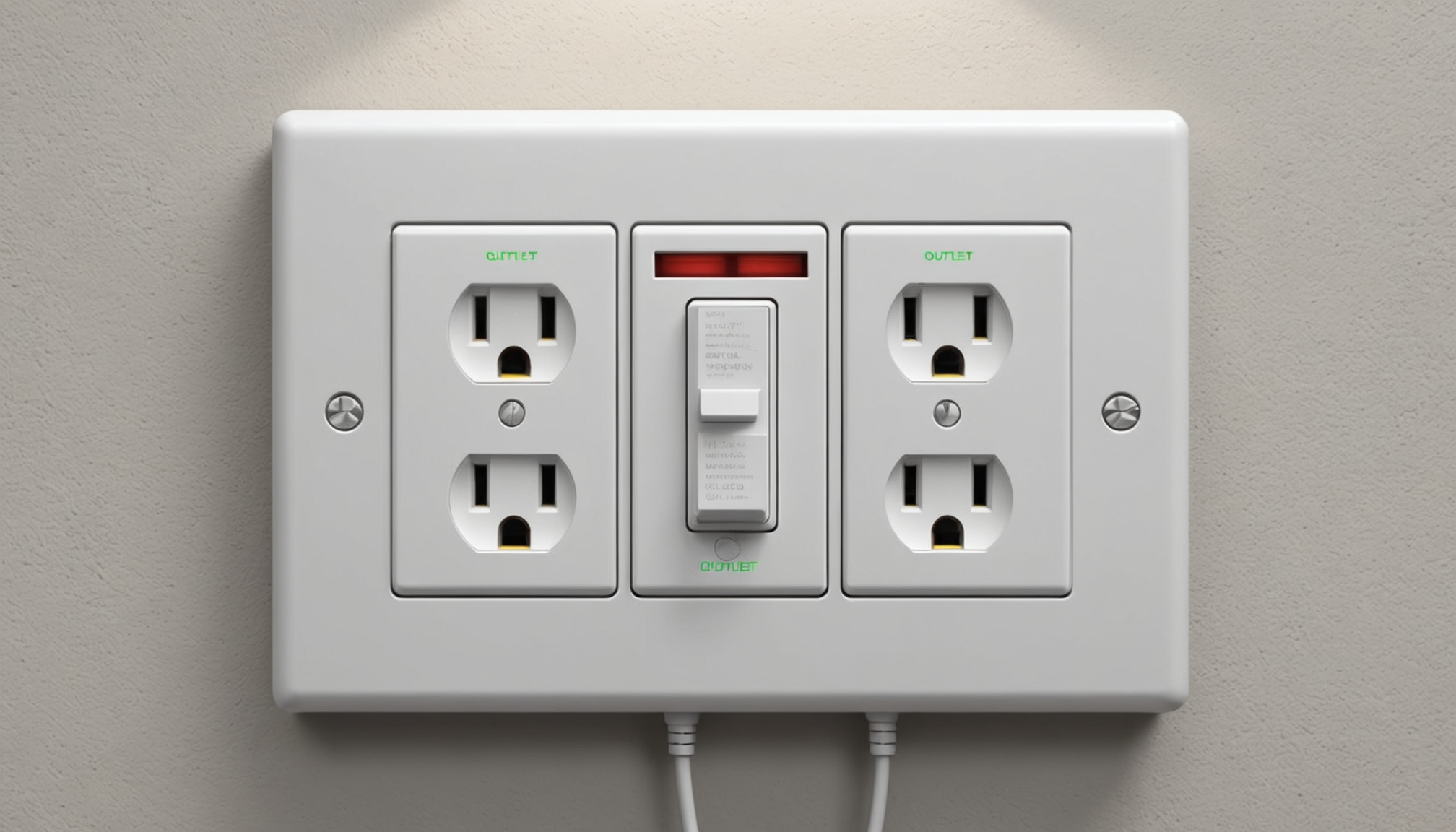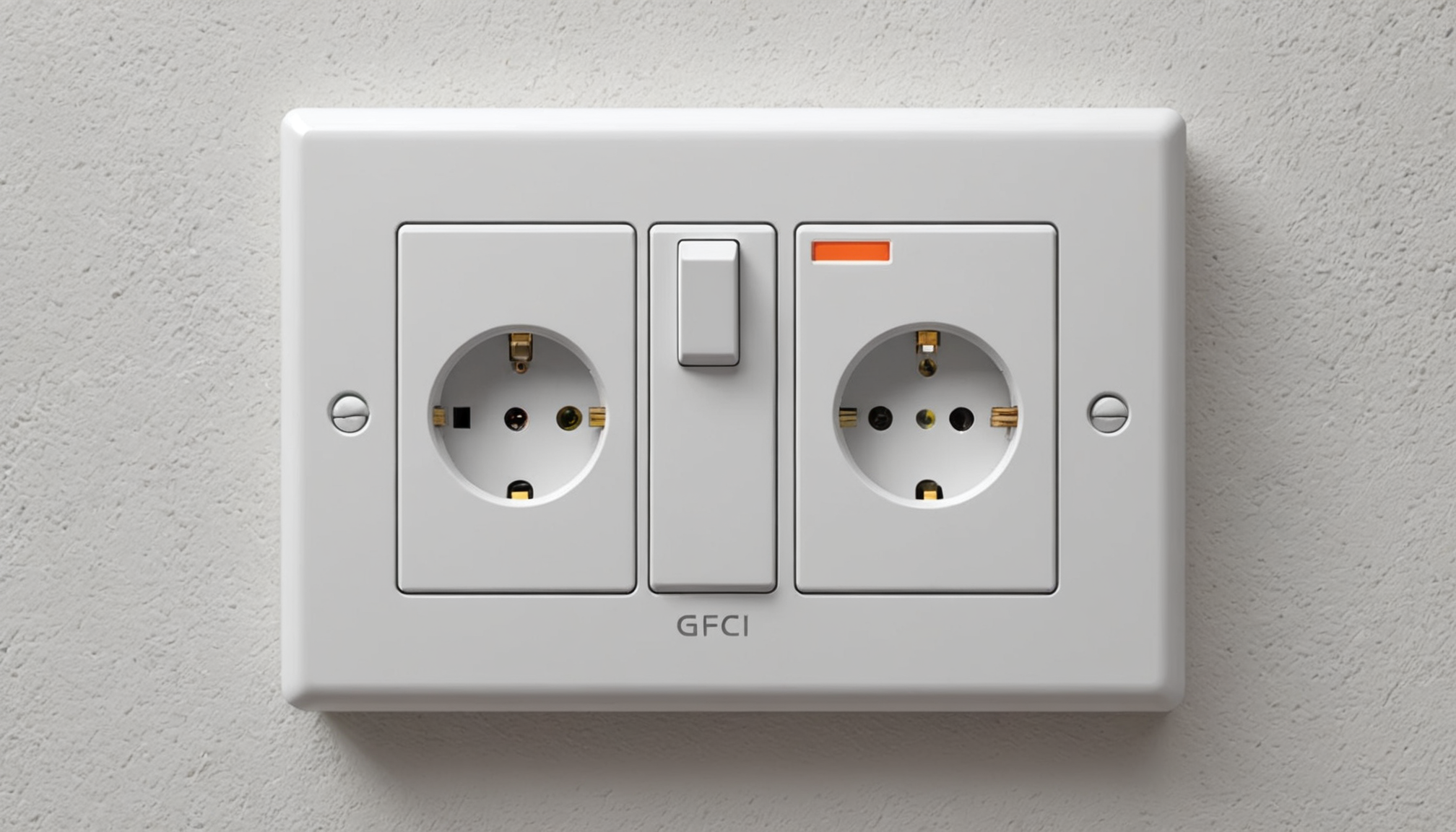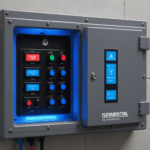GFCI outlets, or Ground Fault Circuit Interrupter outlets, serve as crucial safety devices in modern homes, particularly in areas where water and electricity could potentially meet. These specialized electrical outlets constantly monitor the flow of electricity between the hot and neutral wires, automatically shutting off power when they detect even slight imbalances that could indicate a dangerous situation.
These safety-enhanced outlets are easily identifiable by their distinctive features: two buttons marked “TEST” and “RESET” located between the outlet slots. Most modern GFCI outlets also include indicator lights that show whether the outlet is providing protection or needs attention.
| GFCI Component | Function |
| Test Button | Simulates ground fault to verify protection |
| Reset Button | Restores power after tripping |
| Internal Sensor | Monitors current flow differences |
| Status Indicator | Shows protection status |
The technology behind GFCI outlets is remarkably sensitive, capable of detecting current differences as small as 4-5 milliamps and responding in as little as 1/30th of a second. This quick response time is crucial for preventing electrical shocks that could be fatal.
These devices operate by comparing the amount of current flowing into and out of a circuit. When everything works normally, the same amount of current that flows in should flow out. However, if current finds an alternative path to ground – such as through water or a person – the GFCI detects this imbalance and cuts power immediately.
- Required in bathrooms, kitchens, garages, and outdoor areas
- Protects against ground faults and electric shocks
- Can protect multiple outlets downstream
- Essential for bathroom and kitchen safety
- Must meet strict electrical repair and installation standards
Unlike standard outlets, GFCI outlets can protect other outlets that are wired “downstream” on the same circuit. This feature, known as series protection, means that one GFCI outlet can safeguard multiple standard outlets, though it’s important to properly label protected outlets for future reference.
Common causes of GFCI tripping
When a GFCI outlet trips repeatedly, several common issues are typically to blame. Understanding these causes can help homeowners address problems effectively and maintain proper bathroom and kitchen safety standards.
- Water Exposure
- Splashing water on outlets or plugs
- High humidity levels in bathrooms
- Condensation on electrical devices
- Damaged or Worn Equipment
- Frayed power cords
- Damaged appliance wiring
- Worn-out GFCI outlets requiring electrical repair
- Circuit Overload
- Too many devices on one circuit
- High-amperage appliances running simultaneously
- Extension cord daisy-chaining
- Weather-Related Issues
- Rain seepage into outdoor outlets
- Melting snow or ice affecting exterior connections
- Extreme temperature fluctuations
- Wiring Problems
- Loose connections
- Deteriorated wire insulation
- Incorrect wiring during installation
When GFCI outlets trip due to these issues, it’s crucial to identify and address the root cause rather than repeatedly resetting the outlet. Some problems, like avoiding water exposure or reducing circuit load, can be managed by homeowners. However, issues involving internal wiring or damaged outlets should be addressed by a qualified electrician to ensure safety and compliance with electrical codes.
Certain appliances, particularly those with motors or heating elements, can cause nuisance tripping due to their normal operation. This includes refrigerators, air conditioners, and power tools. In such cases, dedicated circuits might be necessary to prevent unwanted interruptions while maintaining safety standards.
Safety benefits and protection features
GFCI outlets represent one of the most significant advancements in electrical safety for homes and businesses. Their protection features offer multiple layers of security that can mean the difference between life and death in hazardous situations.
The primary benefit lies in their ability to prevent electrical shocks through instantaneous power interruption. When functioning correctly, these devices provide:
Critical Safety Features:
• Protection against ground faults as small as 5 milliamps
• Response times faster than human reflexes (1/30th of a second)
• Automatic power shutoff during dangerous conditions
• Protection for both people and equipment
Particularly crucial for bathroom and kitchen safety, GFCI outlets help prevent electrocution in areas where water and electricity could potentially mix. These devices have been proven to reduce electrical fatalities by more than 75% since their introduction, making them an invaluable component of modern electrical systems.
The protection extends beyond direct user safety:
• Prevention of electrical fires
• Protection of sensitive electronic equipment
• Reduction of electrical system damage
• Early warning of potential wiring problems
Modern GFCI outlets also include advanced features like:
• Self-testing capabilities
• End-of-life indicators
• Tamper-resistant shutters
• Weather-resistant construction for outdoor units
These safety devices are particularly valuable for protecting vulnerable populations, including children and elderly individuals who might be more susceptible to electrical accidents. When electrical repair becomes necessary, GFCI outlets also provide clear indicators of problems, helping homeowners and electricians identify issues before they become dangerous.
Their ability to protect “downstream” outlets means that a single GFCI can safeguard multiple points in your home, creating a comprehensive safety network that monitors electrical current patterns continuously. This cascade protection feature makes them both cost-effective and efficient in providing whole-house safety coverage.
Testing and maintaining your GFCI
Regular testing and maintenance of GFCI outlets are essential practices that ensure these vital safety devices continue functioning correctly. Experts recommend testing each GFCI outlet monthly to verify its protective capabilities and maintain optimal bathroom and kitchen safety standards.
To properly test a GFCI outlet, follow these steps:
1. Press the “TEST” button firmly
2. Listen for a clicking sound
3. Verify that power to the outlet is cut off
4. Press “RESET” to restore power
5. Confirm the outlet is working by plugging in a simple device
Keep a testing schedule by:
• Marking monthly reminders on your calendar
• Testing after major electrical storms
• Checking outlets before using them for critical equipment
• Documenting test dates and results
Signs that indicate your GFCI outlet needs electrical repair or replacement:
• Failure to trip when tested
• Inability to reset after tripping
• Frequent random tripping
• Indicator light showing problems
• Visible damage or discoloration
• Age exceeding 10 years
Proper maintenance also includes:
• Keeping outlets clean and free from dust
• Protecting outdoor GFCI outlets with weatherproof covers
• Inspecting connected cords and plugs regularly
• Ensuring proper loading of circuits
• Checking for loose connections
For optimal performance:
• Never paint over GFCI outlets
• Keep them accessible for testing
• Replace units showing signs of wear
• Have professional inspections annually
• Document any unusual behavior
If a GFCI outlet fails any test or shows signs of deterioration, it should be replaced immediately by a qualified electrician. Remember that GFCI outlets have a typical lifespan of 10-15 years, after which replacement is recommended even if they appear to be working correctly.
Troubleshooting frequent GFCI trips
When dealing with frequently tripping GFCI outlets, a systematic approach to troubleshooting can help identify and resolve the underlying issues. Begin by documenting when and how often the trips occur, as patterns can reveal specific triggers or problems that need addressing.
Start with a visual inspection of all connected devices and cords:
• Look for signs of wear, damage, or moisture
• Check for loose connections at the outlet
• Inspect all plugs for bent prongs or damage
• Examine wire insulation for any breaks
If the GFCI outlet trips immediately after resetting:
1. Unplug all devices from the circuit
2. Reset the GFCI
3. Plug devices back in one at a time
4. Note which device triggers the trip
For persistent issues, consider these advanced troubleshooting steps:
• Test the outlet with a GFCI circuit tester
• Verify proper wiring connections
• Check for moisture behind the outlet plate
• Measure voltage levels with a multimeter
• Inspect downstream outlets for problems
Common resolution strategies include:
• Replacing damaged cords or devices
• Installing dedicated circuits for problem appliances
• Upgrading outdated GFCI outlets
• Addressing moisture issues
• Correcting wiring problems
If bathroom and kitchen safety is compromised by frequent GFCI trips, consult a professional for electrical repair. Some issues require expert attention:
• Complex wiring problems
• Multiple outlet failures
• Age-related deterioration
• Incorrect initial installation
• Circuit overload issues
Keep track of any electrical repair work performed and maintain records of when outlets were installed or replaced. This information can be valuable for future troubleshooting and maintenance scheduling.











